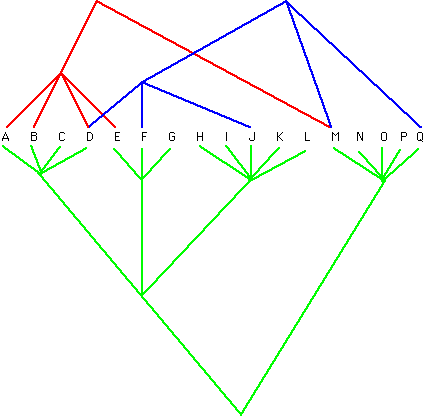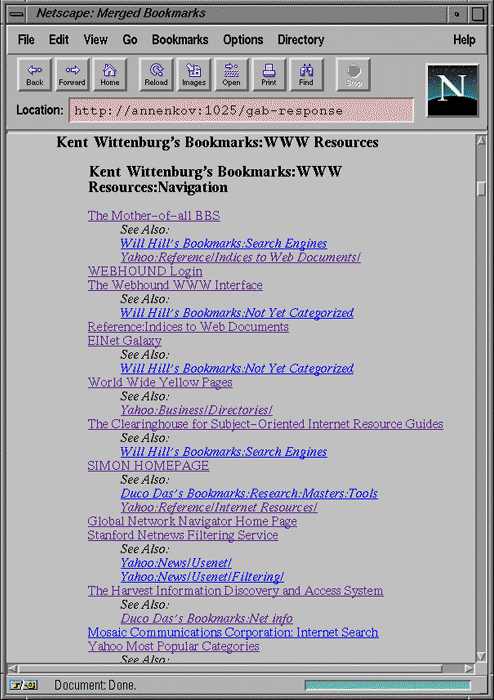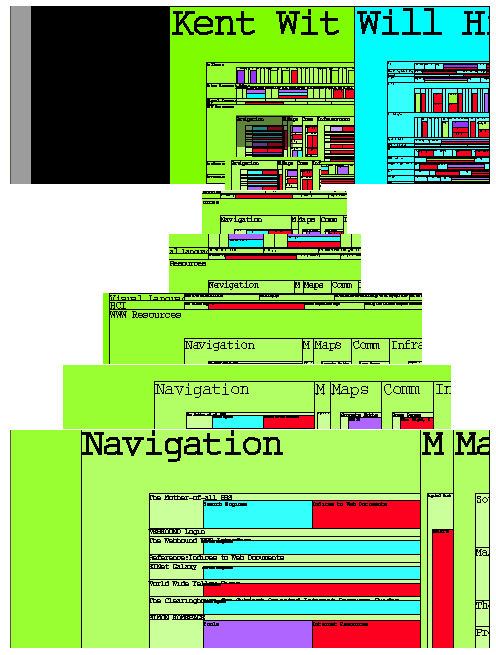A Group Asynchronous Browsing (GAB) Server
Premise: Users submit their subject hierarchies (bookmarks) to the GAB server. The GAB server then forms a multitree from these hierarchies.

TIL that ls -lh path/to/folder lists the file size in human readable units. A
bit surprised that the .gif provided by W3 is 4.8KB, while its converted .png is
16KB.
This kind of collaboration swims against the current of the increased focus on user privacy. Bookmarks feel too personal to share. Some privacy protections would need to be built in for this proposal to fly today.
Clients (users) can request a subset of trees, e.g. from a suitable group of people, from the multitree database. The server responds with a merged tree, e.g.

This presentation presents a “lost in hyperspace” problem, when the user makes an abrupt jump to another location in the document that is off-screen initially. To remedy this, propose a Pad++ multitree browser that uses treemaps to visualize the hierarchy, e.g.

Clients may also send a list of URLs, and the server responds with “close relatives” of those URLs. With respect to some node \(X\) and some multitree \(MT\):
- The siblings of \(X\) in \(MT\ = \{Z | Z\ \) is an immediate child of some immediate parent node of \(X\) in \(MT\), and \(Z \ne X \}\), e.g. \(A_{siblings} = \{B, C, D, E\}\).
- The cousins of \(X\) in \(MT\ = \{Z | Z\ \) is a sibling of \(Y\), \(Y\) is a sibling of \(X\), and \(Z\) is not a sibling of \(X\), e.g. \(A_{cousins} = \{F, G, J\}\).
The merged subject tree database has sparse connectivity, that using cousins and a more general purpose subject index is needed for practicality.
References
- Group Asynchronous Browsing on the World Wide Web. Wittenburg, Kent; Das, Duco; Hill, Will; Stead, Larry. The Web Conference, 4th. www.w3.org . 1995.
One of the grand dreams of the web is bringing people together so that they may find relevant information.
Sometimes this is implicit, e.g. Google Search’s PageRank learns from inter-page links which are mostly made by people, but there may be room for explicit collaboration when navigating the web. This section explores such explicit attempts.
#lost-in-hyperspace